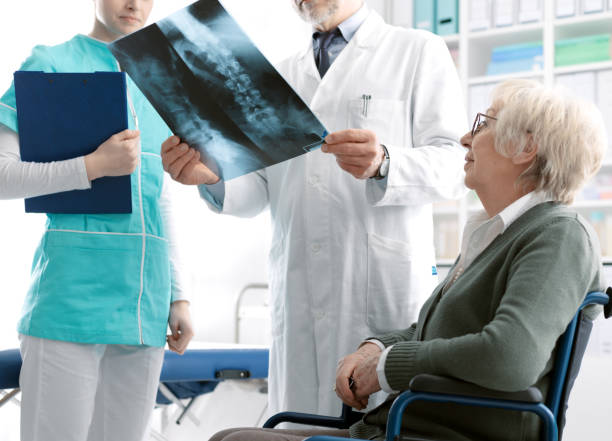
Whenever a group of older adults gather to socialize, at some point in time the conversations will invariably gravitate toward the struggles some are having with various bone issues associated with aging.Osteoporosis affects about 54 million people in the United States with women being four times more likely to develop the disease than men.It is often called the silent disease because osteoporosis typically produces no symptoms and can progress for years undetected.Osteoporosis is a chronic disease that decreases bone density, making them more brittle and susceptible to fractures and breaks.
While osteoporosis can occur at any age, senior populations are at the greatest risk with medical experts estimating that 50 percent of people over the age of 50 are affected to some degree by the disease.Researchers have discovered there is a genetic component to the disease which means that people with a family history of osteoporosis are more likely to develop it versus the general population.Symptoms of Bone DiseaseOsteoporosis is a serious medical condition because bone injuries can cause pain and disabilities that make it difficult for people to perform normal, everyday activities.It can impact your ability to walk, cause spinal deformities, and even diminish the quantity and quality of your sleep.
In some cases, complications from bone injuries can cause a persons health to quickly deteriorate and even indirectly lead to their death.While there are rarely overt symptoms of osteoporosis in its early stages, there are warning signs to be on the alert for that include:Receding gums.Bone loss can occur in the jaw, leading to tooth loss and certain gum diseases.Weak Grip.There is a correlation between grip strength and bone density in the hands.
Low grip strength can be an indicator of the disease at an early stage.Fingernail issues.Early-stage osteoporosis often results in brittle, slow growing fingernail tissue.Poor or stooped posture.Having a bent over posture rather than a more erect one is one of the latter stage symptoms of the disease.Spine and neck pains.
Back and neck pains that are chronic rather than occasional can be a strong indicator of loss of bone density in these critical body areas.Loss of height.People who develop osteoporosis can experience height loss, sometimes reaching up to six inches.Ways To Promote Bone HealthFortunately, osteoporosis can be detected earlier today than in previous years thanks to technological advancements.
A DEXA scan is a low radiation x-ray procedure that measures the density of minerals in bones.This scan can help diagnosis the disease, predict your risk of fractures, and evaluate the effectiveness of osteoporosis medicines.Your physician may also recommend other tests such as a TBS scan to gauge bone quality and further evaluate fracture risk.
Simple spine or hip x-rays can also be helpful because they can reveal if fractures or deformities have already occurred.As with all diseases, prevention is the best way to be and stay healthy.Bone health can be promoted with dietary changes that include:High calcium foods such as low-fat dairy products, green leafy vegetables, fish, fortified juices, milk, and grains.Foods with vitamin D such as yogurt, tuna, salmon, mushrooms, and egg yolks.High protein foods that can include chicken breasts, cottage cheese, lean beef, lentils, shellfish, peanut butter, and many more.Lifestyle changes can also impede the likelihood of developing osteoporosis.Limiting or stopping alcohol and tobacco intake are two of the best ways to ensure bone health.Prevent Bone InjuriesCommon sense is also a powerful tool that can minimize the risk of bone fractures.
If you need a cane or walker to get around safely, use one.Wear properly sized, slip resistant footwear outside and indoors.Avoid wet, slippery or icy walkways when possible.
Clear your home and living areas of clutter than can cause slip-and-fall accidents.Equip your bathroom, tubs and showers with non-slip mats.Make sure your living areas are well lit so you can see obstacles before they become a tripping hazard.Your doctor can prescribe osteoporosis specific medications that can treat symptoms as well as recommend an exercise regimen that can help preserve bone density.
Vitamin and mineral supplements are also an option, but always speak first with your physician before buying them so that you know you are using the correct ones for your particular health situation.There is no cure for osteoporosis, but regular medical checkups, treatment and common sense can help protect and strengthen your bones all the days of your life.
Disclaimer: This story is auto-aggregated by a computer program and has not been created or edited by Senior Savings Deals.
Publisher: Senior Caregivers ( Read More )
Publisher: Senior Caregivers ( Read More )

